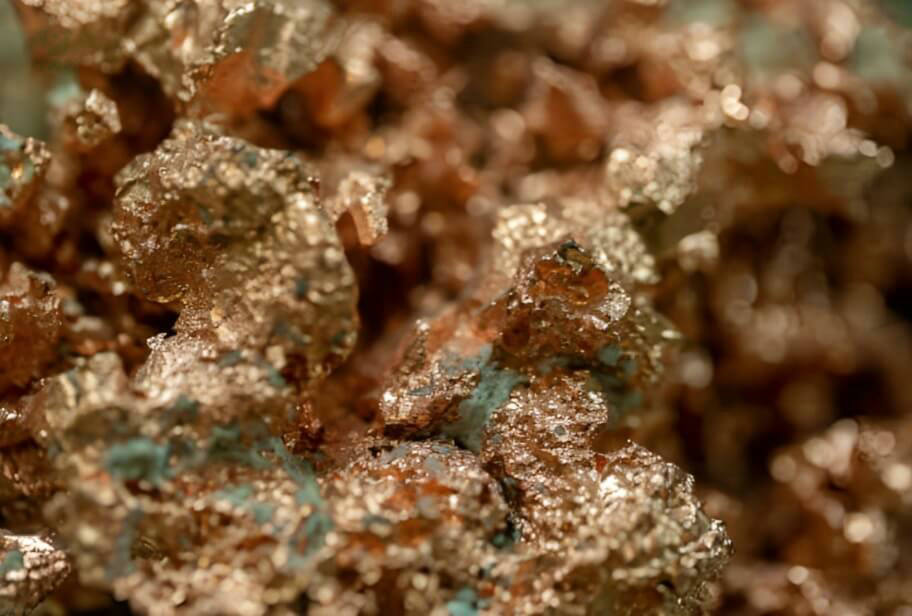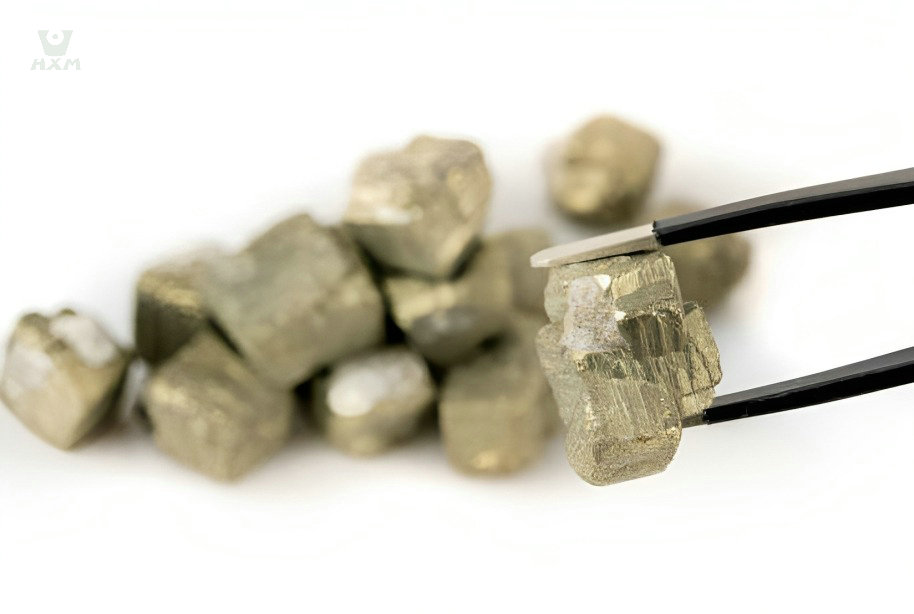In the tapestry of human history, few elements have played a more transformative role than copper. Its discovery marked a significant turning point, ushering in the Bronze Age and revolutionizing countless aspects of civilization. But where did this remarkable metal make its debut on the world stage? Join us on a journey through time and geography as we uncover the ancient origins of copper, revealing the fascinating stories of its first encounters by our ancestors. From the depths of ancient mines to the heart of technological advancements, the story of where copper was found is a tale of human ingenuity, exploration, and innovation that has left an indelible mark on our world.
where was copper found?
Copper was initially found in various regions of the world, including the Fertile Crescent, where its earliest utilization dates back around 10,000 years. It was then discovered in the Balkans, specifically Serbia, around 5,000 years ago, marking the transition from native copper to the smelting of copper ores. Ancient Egypt played a significant role in copper’s history, with advanced extraction techniques developed alongside its use in monumental structures like the Great Pyramids. Cyprus, an island with abundant copper deposits, contributed to the metal’s early significance, and even the word “copper” has its roots in the name of the island. In South America, cultures such as the Moche and Nazca utilized copper for artistic and ceremonial purposes. These diverse discoveries across continents highlight copper’s pivotal role in the development of human civilization and technological advancement.
Copper, a metal that has fascinated mankind for millennia, has an eternal appeal. Its rich history is intertwined with the evolution of civilization and the wonders of technology that have shaped our modern world. We will unravel the secrets of copper’s timeless value and significance while learning about the important contribution of copper alloy suppliers in ensuring the availability of this extraordinary metal in a variety of applications. Join us as we peel back the layers of history to reveal how copper continues to shine in the 21st century with its historical treasures and cutting-edge uses.
Copper's Ancient Pioneers
In this section, we embark on a captivating journey that transcends time, tracing the footsteps of copper’s earliest pioneers. From the Fertile Crescent’s innovative craftsmen who shaped tools from native copper to modern technological marvels, we explore how copper’s legacy spans epochs, constantly reinventing itself to remain at the forefront of innovation. Discover how the ancient sparks of curiosity ignited the path to copper’s current-day contributions in cutting-edge electronics and beyond.
The Mesopotamian craftsmen: Shaping ancient tools with native copper
In the cradle of human civilization, the Fertile Crescent, a remarkable chapter in the history of metallurgy was penned by Mesopotamian craftsmen. These early innovators uncovered native copper, a metal that required no smelting, and began crafting tools of unparalleled utility.
Native copper, primarily found in regions like modern-day Iraq and Iran, was an astonishing discovery. Its malleability allowed these ancient artisans to shape it with relative ease, paving the way for a new era of toolmaking. Mesopotamians crafted a diverse array of copper tools, from rudimentary chisels to intricate ornaments.
These tools played pivotal roles in agriculture, construction, and trade, revolutionizing daily life. They were instrumental in erecting architectural marvels like ziggurats and irrigation systems that transformed arid landscapes into fertile oases.
The ingenuity of Mesopotamian craftsmen laid the foundation for copper’s enduring legacy, showcasing the metal’s innate properties of ductility and conductivity. As we delve into their ancient methods and creations, we gain a profound appreciation for how these early pioneers harnessed the potential of copper, setting the stage for its continued evolution through the ages.
The Mesopotamian craftsmen: Shaping ancient tools with native copper
In the cradle of human civilization, the Fertile Crescent, a remarkable chapter in the history of metallurgy was penned by Mesopotamian craftsmen. These early innovators uncovered native copper, a metal that required no smelting, and began crafting tools of unparalleled utility.
Native copper, primarily found in regions like modern-day Iraq and Iran, was an astonishing discovery. Its malleability allowed these ancient artisans to shape it with relative ease, paving the way for a new era of toolmaking. Mesopotamians crafted a diverse array of copper tools, from rudimentary chisels to intricate ornaments.

These tools played pivotal roles in agriculture, construction, and trade, revolutionizing daily life. They were instrumental in erecting architectural marvels like ziggurats and irrigation systems that transformed arid landscapes into fertile oases.
The ingenuity of Mesopotamian craftsmen laid the foundation for copper’s enduring legacy, showcasing the metal’s innate properties of ductility and conductivity. As we delve into their ancient methods and creations, we gain a profound appreciation for how these early pioneers harnessed the potential of copper, setting the stage for its continued evolution through the ages.
Modern Marvels: Copper's Role in Cutting-Edge Electronics
In our contemporary world, copper’s significance has transcended the realm of ancient tools and has found a remarkable niche in cutting-edge electronics. Its contribution to this high-tech landscape is grounded in its exceptional electrical conductivity.

Copper’s atomic structure, with a free electron in its outermost shell, makes it an ideal conductor of electricity. This property is harnessed in the creation of intricate circuitry within electronic devices. The copper traces on printed circuit boards (PCBs) serve as highways for electrical currents, ensuring rapid and efficient transmission of information.
Furthermore, copper’s thermal conductivity is a boon for modern electronics. It efficiently dissipates heat generated by microprocessors and other components, preventing overheating and maintaining the optimal performance of devices.
Beyond its role in PCBs, copper is also essential in semiconductors, connectors, and wires, enabling the seamless functioning of smartphones, computers, and countless other electronic gadgets we rely on daily.
This seamless integration of copper into the world of electronics is made possible through the expertise and innovation of copper alloy suppliers. Their contributions in providing specialized copper alloys tailored to the exacting demands of modern electronics underscore copper’s indispensable role in shaping the technologies that define our modern world.
The story of copper’s integration into modern electronics is a testament to its adaptability and enduring relevance. As we delve into the intricacies of copper’s contributions to our digital age, we gain a profound understanding of its pivotal role in shaping the technologies that define our modern world.
The Balkans
Our exploration of copper’s historical journey now takes us to the Balkans, a region where copper metallurgy evolved into an art form. Here, we will delve into the ancient mastery of extracting and working with copper, examining how these skills have evolved into contemporary metallurgical practices. From the rich mining heritage to the sustainable innovations in copper processing, this section offers a captivating glimpse into how the Balkans played a pivotal role in shaping the copper industry’s past and present.
Serbia's Copper Legacy: From Ancient Smelting to Modern Metallurgy
Serbia, a land rich in mineral wealth, holds a special place in the annals of copper history. Its copper legacy dates back thousands of years when ancient civilizations began to harness the copper ores found in the region.
The earliest copper artifacts discovered in the Balkans showcase the craftsmanship of prehistoric communities. These early metalworkers employed rudimentary techniques like open-pit mining and charcoal-fired furnaces to extract and smelt copper.
As time progressed, the region’s copper industry evolved. The advent of more advanced smelting methods, such as the use of bellows and controlled furnaces, marked a significant leap in copper metallurgy.
In modern times, Serbia’s copper industry has embraced cutting-edge technology and sustainable practices. State-of-the-art mining operations and eco-friendly refining processes ensure that the rich legacy of copper continues to thrive.
Serbia’s journey from ancient smelting to modern metallurgy stands as a testament to human ingenuity and our enduring relationship with this remarkable metal.
Green technology revolution: Copper's contribution to sustainable energy
In an era marked by a pressing need for sustainable solutions, copper has emerged as a key player in the green technology revolution. Its versatile properties, particularly its high electrical and thermal conductivity, make it an indispensable element in various sustainable energy applications.

One of copper’s prominent roles is in electrical wiring for renewable energy systems. Copper’s superb conductivity ensures minimal energy loss during the transmission of electricity from renewable sources such as solar panels and wind turbines. This efficiency is crucial for maximizing the output of clean energy.
Copper’s thermal conductivity also shines in sustainable energy applications. It plays a vital role in the efficient heat transfer systems of solar thermal power plants, where sunlight is converted into electricity.
Furthermore, electric vehicles (EVs), which are instrumental in reducing carbon emissions, rely heavily on copper for their wiring and motors. Copper’s conductivity and durability make it ideal for powering these eco-friendly modes of transportation.
Behind these remarkable achievements lie the contributions of copper alloy suppliers, who provide specialized materials to meet the stringent demands of the green technology sector. As we delve into this section, we will unravel the intricate ways in which copper, supported by the expertise of copper alloy suppliers, contributes to sustainable energy, facilitating the transition towards a greener, more environmentally conscious world.
Copper's Legacy in the Land of the Pyramids and Beyond
Our journey through copper’s historical significance now takes us to the enigmatic land of Egypt, where this extraordinary metal played a pivotal role in shaping ancient civilizations. In this section, we will delve into the remarkable applications of copper in Egypt’s iconic structures, explore its presence in the everyday lives of ancient Egyptians, and trace its influence on neighboring cultures. From the gleaming treasures of the pharaohs to the intricate workings of copper artisans, this part of our exploration promises to unveil the enduring legacy of copper in one of history’s most captivating civilizations.
The Copper Alchemists of Egypt: Ancient mastery meets modern materials science
In the annals of metallurgy, ancient Egypt stands out as a crucible of innovation, particularly in the realm of copper. The Egyptians, often referred to as the “Copper Alchemists,” demonstrated unparalleled mastery in working with this metal, pioneering techniques that continue to inspire modern materials science.
One of their most renowned achievements was the development of a distinctive copper alloy known as “arsenical copper,” which they used for various applications, including tools and jewelry. This alloy, a blend of copper and arsenic, showcased the Egyptians’ keen understanding of metallurgy, as arsenic served to harden the copper, producing stronger and more durable artifacts.
Moreover, the ancient Egyptians pioneered the art of copper alloying, combining copper with other metals such as tin to create bronze. This breakthrough gave rise to an era of remarkable bronze sculptures and tools, marking a significant advancement in the Bronze Age.
Copper alloy suppliers explore the intricate compositions of Egyptian copper alloys, seeking to replicate their unique properties for a wide range of applications, from aerospace engineering to advanced electronics.
Copper in the digital age: Its significance in data transmission and telecommunications
In the digital age, copper continues to play a pivotal role in data transmission and telecommunications. Its electrical conductivity and reliability make it a top choice for various applications.

-
Telecommunication Cables: Copper is used extensively in telecommunication cables, including twisted-pair cables and coaxial cables. These cables carry voice and data signals over long distances with minimal signal loss. The high conductivity of copper ensures that signals remain strong and clear.
-
Internet Connectivity: The vast majority of internet connections, including DSL and Ethernet, rely on copper infrastructure. Copper's ability to transmit data quickly and efficiently has been essential in connecting the world.
-
High-Speed Data Transmission: Copper is used in high-speed data transmission technologies such as ADSL and VDSL. These technologies enable fast internet connections by utilizing the exceptional conductivity of copper.
-
Reliability: Copper is known for its durability and resistance to environmental factors. This makes it a dependable choice for outdoor installations, ensuring consistent connectivity even in challenging conditions.
-
Broadband Services: Copper plays a crucial role in delivering broadband services to homes and businesses. Its ability to support high bandwidths is vital for streaming, video conferencing, and other data-intensive activities.
-
Hybrid Fiber-Copper Networks: Copper is also used in hybrid fiber-copper networks, where it complements optical fiber to extend high-speed connectivity to end-users, combining the benefits of both technologies.
Copper alloy suppliers are instrumental in providing high-quality copper materials that meet the stringent requirements of the telecommunications industry. As technology continues to advance, copper remains an indispensable component in the digital world, enabling efficient data transmission and telecommunication services.
Cyprus
This section explores the intriguing journey of Cyprus, the historical island of copper. We delve into its rich past, where copper mining was a cornerstone of ancient civilizations. From there, we transition into the modern era, highlighting how copper’s demand has evolved to become a driving force behind renewable energy and electric vehicles. Throughout this journey, copper alloy suppliers have played a crucial role in providing the materials needed for these transformative technologies.
Cyprus through the ages: Mining copper in ancient times
In antiquity, Cyprus held a special place in the world due to its abundant copper resources. The island’s name itself, “Cyprus,” is believed to have originated from the Greek word for copper, “Kypros.” Copper mining on the island dates back over 4,000 years, making it one of the earliest centers of metallurgy in the ancient world.
-
Mining Techniques: Ancient Cypriots initially used surface mining techniques to extract copper ores. They dug open pits and tunnels into the earth to reach copper deposits. As technology advanced, they developed more sophisticated methods, including underground mining and smelting, to access deeper ore deposits.
-
Trade and Commerce: The island's copper wealth brought prosperity, and Cyprus became a major hub for the production and export of copper. Its valuable copper products were traded throughout the Mediterranean and beyond, contributing significantly to the island's economic and cultural development.
-
Copper Alloys: Ancient Cypriot metallurgists also experimented with copper alloys, notably bronze, by combining copper with tin. This innovation led to the Bronze Age, which revolutionized tools, weapons, and artistry worldwide.
-
Legacy: The legacy of Cyprus's copper mining heritage continues to influence the island's identity, and it remains a symbol of its historical significance.
Today, copper alloy suppliers continue to provide high-quality materials, preserving the tradition of copper craftsmanship while meeting the demands of modern industries. Cyprus’s ancient mining endeavors laid the foundation for the enduring importance of copper in contemporary applications, including renewable energy and electric vehicles.
Copper's Contemporary Demand: Powering Renewable Energy and Electric Vehicles
In the modern world, copper’s role has expanded beyond its historical significance. It has emerged as a critical element in two transformative sectors: renewable energy and electric vehicles (EVs). This section explores how copper, supplied by dedicated copper alloy suppliers, plays a pivotal role in driving these sustainable technologies.

-
Renewable Energy: Copper is at the heart of renewable energy sources like solar and wind power. In solar panels, copper is used in photovoltaic cells to conduct electricity efficiently. Wind turbines, both onshore and offshore, rely on copper wiring for power generation. As the world transitions to cleaner energy sources, copper's conductivity and durability make it an essential component in reducing our carbon footprint.
-
Electric Vehicles (EVs): The electrification of transportation is a key strategy in combating climate change. Copper is a fundamental component in EVs, from the wiring that connects batteries to motors to the charging infrastructure. With the global push toward sustainable mobility, the demand for copper in the automotive industry is skyrocketing.
As we embrace cleaner energy and transportation solutions, the demand for copper continues to grow. Copper alloy suppliers play a vital role in providing the high-quality materials needed for these technologies, reinforcing copper’s position as an indispensable element in shaping a more sustainable future.
conclusion
In tracing copper’s remarkable journey from the ancient world to the forefront of 21st-century innovation, we witness the unbroken thread of its significance. From the mesmerizing craftsmanship of the Mesopotamian artisans to its pivotal role in cutting-edge technology, copper has proven its worth across millennia.
Today, as we embrace renewable energy and electric vehicles, copper stands as a linchpin in our quest for sustainability. It is the conduit through which power flows, both figuratively and literally, towards a cleaner, greener future.
In this age of digital prominence, we recognize the importance of SEO optimization. Leveraging copper’s rich history and contemporary relevance not only educates but also inspires us to appreciate the role of this enduring metal in our lives.
Copper alloy suppliers remain vital in sustaining this legacy, providing the materials that power our present and steer us toward a brighter, more sustainable tomorrow. As we celebrate copper’s past and present, we also anticipate its ongoing role in shaping the scientific and technological advancements of the future.







